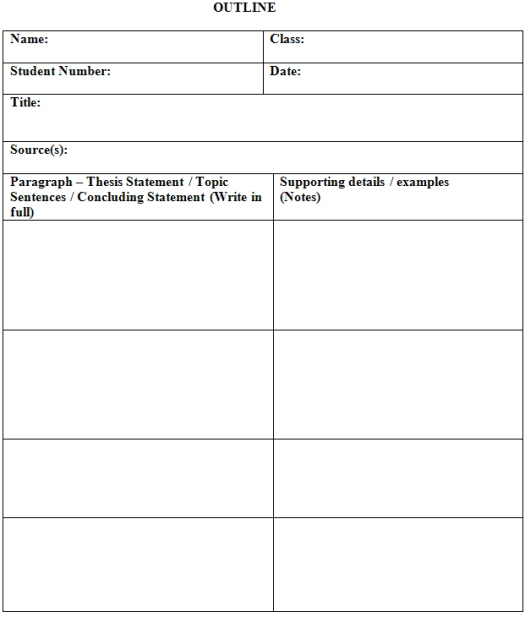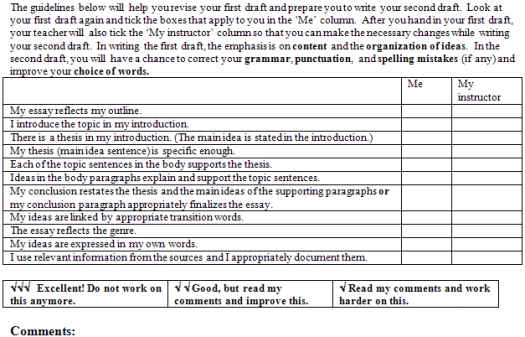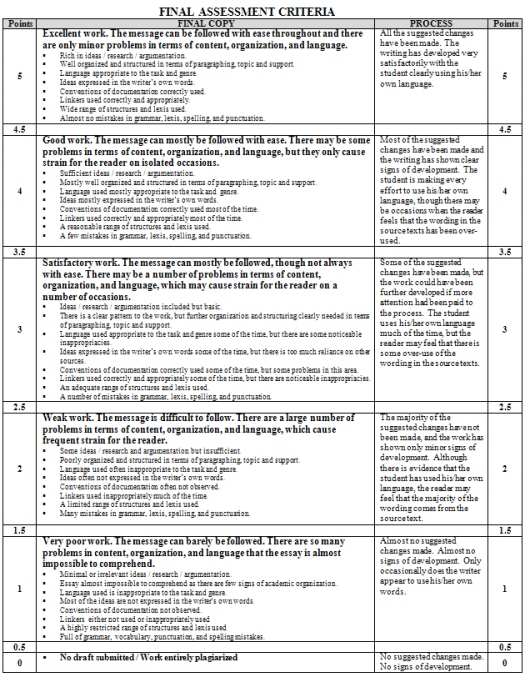Writing Essays: Process, Feedback and Assessment
Nilgun Hancioglu Eldridge and Sezgi Yalin, Northern Cyprus
Nilgun Hancioglu Eldridge is an Assistant Professor at the School of Foreign Languages, Eastern Mediterranean University in North Cyprus. She did her PhD research on integrating corpus data into the post-graduate thesis writing course she has been teaching for the last 10 years. Apart from corpus studies and especially corpus-informed approaches, her research interests include academic writing, data-driven learning, lexical semantics, and lexico-grammar. Due to her current administrative position as the Director of the School of Foreign Languages at the Eastern Mediterranean University, her research interests now also include leadership, change management, and performance management.
E-mail: hancioglu.nilgun@gmail.com

Sezgi Yalin earned her M.A. in TEFL (Teaching English as a Foreign Language) as a Fulbright scholar at the University of Illinois in Chicago. She holds a B.A. in Journalism and English Literature. She worked as an English teacher and teacher trainer in the USA and Poland, and gained additional experience in the field in various countries such as UK, Spain, Egypt, China, Nepal, Tibet, Vietnam and Turkey. A CELTA and Pilgrims trainer, Sezgi’s research interests are teacher training, integrating technology into teaching and creative writing. E-mail: sezgiriza@yahoo.com

Menu
Background
Introducing the process
Outline
First draft
Second draft
Conclusion
EFL students are often required to produce essays in freshman-level EFL courses, and one approach many insutitions might choose to help their students to cope with this very challenging task is to train them in the process writing approach. However, the same institutions might also find it necessary to train their teachers on the assessment of the same approach before asking them to introduce it to their students. Below are materials used to train teachers in the assessment of this process with very detailed suggestions on the steps to follow when taking their students through this process. The materials recommended for use in each step are also provided.
- Make sure the writing assessment criteria (see below) are introduced to the students at the beginning of the writing process. Use an OHT or a data projector for this. Do not give the students a copy of this document yet.
- Emphasize the importance of the process (outline – first draft – second draft – final copy) and the fact that an honest attempt to use their own words will get higher grades than a piece of work that is not written in their own words.
- Ensure that the students are aware of deadlines for all parts of the process.
- Do some practice outlining in class. Focus on thesis statements / topic statements and notes for supporting detail.
- Devote a lesson to the production of the outline. Inform the students in advance, and tell them to bring copies of their sources. Make sure that the outline includes a thesis statement and a topic sentence for each paragraph, as well as notes about supporting content.
Consider having the outline evaluation form printed at the bottom of the outline page for the students to do this on (see below).
Go round and help the students and then get them to fill in the self-evaluation form. Collect the outlines at the end of the lesson, complete the instructor’s part of the form, and write feedback on the outline as necessary, e.g.,
- more ideas for inclusion, advice,
- irrelevant ideas and examples,
- error correction symbols to improve thesis and topic sentences.
- If possible, give students oral feedback too as their outline has a very important role in determining how successful their drafts are going to be.


Get the students to bring a copy of their sources, i.e., published articles, to class, give them back their outlines, and hold a full lesson to produce their first draft on the sheet of paper provided. Provide help as requested. Before the end of the lesson, give students five to ten minutes to go through the self-evaluation section of the form. Go through this with them on OHT or a data projector if necessary, so that they understand exactly what they are checking. Collect the sources, outline, and first draft. Fill in the instructors’ part of the evaluation form and add feedback in the form of comments and/or symbols as necessary. Show in the margins where students need to improve their work. Avoid repeating comments that are already in the grid. Instead, make them more specific. For example, if you marked √ for “I introduce the topic in my introduction”, tell the student in the margin how s/he can improve this (e.g., describe your topic in more detail in this part of your introduction). If the organisation is good (and if you have managed to get most of this sorted out at the outline stage), you can start work on language errors if you wish, but do not over-correct. Write encouraging comments, but do not leave a student who needs to do a lot more to develop his writing with the impression that his work is very good and will receive a high grade.


Make sure the students have with them their sources, outline, and first draft. Give them the second draft sheet and allow a whole lesson to produce the second draft, helping as necessary.
Leave students time to go through the self-assessment procedure at the end of the lesson, and encourage them to make use of the error correction key to look at their work.
Collect the second draft (as well as outline, first draft and sources) at the end of the lesson (unless, obviously, you are asking them to do this stage at home).
Go through this draft for language problems, but do not ignore content and organisation if these are still major problems.
Use error-correction symbols with care, and check your feedback from the perspective of the student.
Do not over-use the symbols, and make sure that the students would be able to use them to improve their work. Focus on marking errors that occur very frequently and those that the student would be able to correct at his/her level. For example, do not mark a grammar point that the student has not learned yet or you do not think is possible for him/her to correct because of his/her language level. Mark only what the student is able to correct. If you are worried that many other mistakes will go uncorrected, make sure that you correct them all in the final copy so that if the student comes to see it, s/he sees the correct forms of those mistakes. Also, when using some of the error correction symbols such as the “^”, make it as specific as possible. Indicate the part of speech (article, noun, etc) for the missing word(s).
Explain to the students that the role of the feedback is to help them with some of their main language problems, not to correct every single mistake for them.



INFORMATION AND QUESTIONS ABOUT THE WRITING ASSESSMENT PROCESS
1. THE FINAL COPY GRADE
Each band has a general profile in bold at the top. Use this to quickly assess the student’s work.
The bulleted items beneath the profıle describe what the work might typically look like in further detail but there is no need to go through each item individually or to ‘add up’ bullets to assess a grade. Use it as a quick checking mechanism, and if you feel the work is a little better or not quite as good, use the ‘half-point’ bands.
If the student has not submitted a final copy, mark the work on the basis of the last copy the student submitted, even if it is their first draft.
2. THE PROCESS GRADE
The bands for the process grade are for the marker to give a holistic grade based on the entire portfolio of outline, drafts and the final copy. Go through the portfolio at speed and give a mark accordingly.
At the minimum, students should have submitted a first draft, and a copy of the sources (if used).
If a student reaches a high standard after one or two drafts, and insists on submitting the work, they should not be penalised. Minor changes could also be made to a draft without rewriting it entirely, and if there are no suggestions for change, i.e., the work is already good enough and needs no further work, it should fall into the top band for ‘developing very satisfactorily.’
3. PLAGIARISM
If the student is plagiarising source text, try and eliminate the problem through feedback / resubmission as early as possible. Go through the assessment criteria with the students at the outset of the writing process, and show them that the criteria reward honest work more than copying. The ‘use of own words’ criterion appears in both the final draft and process columns for this reason. Insist on having a copy of the sources used. At the same time, be flexible and follow the criteria. Summarising and paraphrasing are difficult skills, and students should not be failed for honestly struggling with them.
4. FEEDBACK
Quality feedback is essential to the process. Please do not give the students the impression that their work is excellent at the drafting stage if it isn’t. They will justifiably complain if they get a low final grade.
Please give specific help, and allocate more class hours for this if you feel it is necessary. ‘Needs developing’ may not be a sufficiently helpful comment for many of our students.
Producing essays is generally considered a challenging task for freshman-level EFL students. This challenge can be overcome to a great extent by training students in the process writing approach and encouraging them to produce the essay by following certain key steps. This may not be enough by itself and needs to be accompanied by some training for the teachers in the assessment of this process with very detailed suggestions on the steps to follow. Training the students and the teachers in process writing and adopting process writing as a method for facilitating the challenging task of producing essays will undoubtedly have positive outcomes on the quality of essays produced by EFL learners.

Please check the Teaching Advanced Students course at Pilgrims website.
Please check the Teaching Academic English course at Pilgrims website.


|